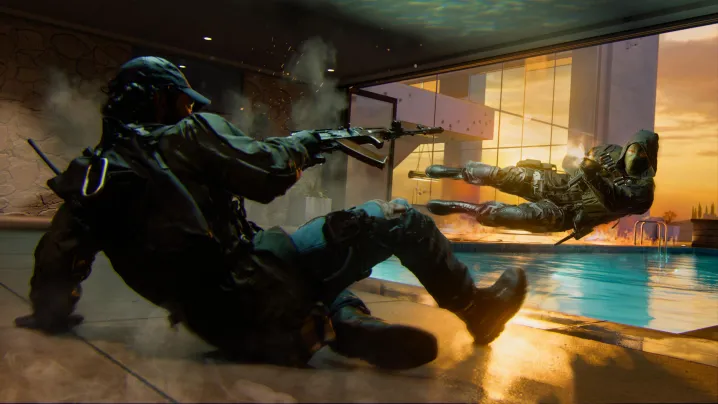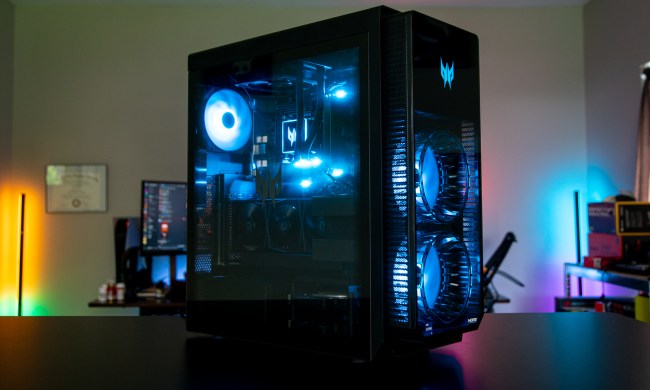
Call of Duty Black Ops 6 is the latest in a long line of high-paced shooters, and like its predecessors, it brings with it not only a new campaign and multiplayer features but enhanced graphics too. Although upgrading your graphics card or processor is always a great way to boost performance in new and demanding games, you can also have a big impact by adjusting its settings to the best ones for you and your PC.
However, even if you’re the most competitive player, you won’t want to just turn all the settings off to maximize your frame rate. You still need clarity to make out your opponents at distance, and what’s the point of playing the latest Call of Duty, if you can’t enjoy some of its new visual flair?
With that in mind, we’ve put together a list of the best Call of Duty settings to give you the best experience possible.
The best settings for Call of Duty: Black Ops 6
There are a lot of settings you can play with in Call of Duty: Black Ops 6, giving you plenty of scope for making the game look and feel just how you like it. Most of them don’t have a giant impact on performance or visuals in their own right, but by selecting the right options, you can have a sizable impact on your system’s performance and ultimately your FPS.
Although Call of Duty games are often considered primarily competitive, I know there are some out there who enjoy it for its more cinematic feel, with more of the visual settings turned on and up. To that end, here are two settings suggestion lists. The first, will be for those who want the game to look good and play well, and the second will be for those who want the best performance for every competitive edge they can muster.
Cinematic play

This will make the game look as close to its best as we can get, while turning off or down visual features that we feel aren’t necessary. Play at your monitor’s native resolution, and set your settings as close to these as you can, while maintaining a frame rate that you feel is smooth and comfortable for your hardware.
- Dynamic Resolution: Off
- Upscaling/Sharpening: FSR or DLSS at highest quality setting. If you don’t like this, turn it off, but I can’t see much of a difference at “Native” settings.
- VRAM Scale Target: 80%
- Variable Rate Shading: On
- Nvidia/AMD Frame Generation: Off — only turn on if you really need extra frames
- Texture Resolution: High
- Texture Filter Anisotropic: High
- Detail Quality Level: High
- Particle Resolution: Normal
- Bullet Impacts: On
- Persistent Effects: On
- Shader Quality: Medium
- On-Demand Texture Streaming: Minimal
- Local Streaming Quality: Normal
- Shadow Quality: High
- Screen Space Shadows: High
- Occlusion and Screen Space Lighting: High
- Screen Space Reflections: High
- Static Reflection Quality: High
- Tessellation: All
- Volumetric Quality: Medium
- Deferred Physics Quality: High
- Weather Grid Volumes: Ultra
- Water Quality: All
- NVIDIA Reflex Low Latency: On
- Depth Of Field, World Motion Blur, Weapon Motion Blur, and Film Grain: Off — personal preference, but most people prefer them off
Competitive play
- Dynamic Resolution: Off
- Upscaling/Sharpening: FSR or DLSS at Quality setting
- VRAM Scale Target: 60%
- Variable Rate Shading: On
- Nvidia/AMD Frame Generation: Off
- Texture Resolution: Normal
- Texture Filter Anisotropic: Normal
- Detail Quality Level: Normal
- Particle Resolution: Normal
- Bullet Impacts: Off
- Persistent Effects: Off
- Shader Quality: Medium
- On-Demand Texture Streaming: Minimal
- Local Streaming Quality: Normal
- Shadow Quality: Low
- Screen Space Shadows: Off
- Occlusion and Screen Space Lighting: Low
- Screen Space Reflections: Normal
- Static Reflection Quality: High
- Tessellation: Near
- Volumetric Quality: Low
- Deferred Physics Quality: Low
- Weather Grid Volumes: Low
- Water Quality: Off
- NVIDIA Reflex Low Latency: On
- Depth Of Field, World Motion Blur, Weapon Motion Blur, and Film Grain: Off
Call of Duty: Black Ops 6 system requirements
Activision has given us in-depth system requirements for its latest release, and fortunately, they’re quite inclusive. That means you can enjoy the latest Call of Duty even if you’re playing on an old potato. However, you will be restricted to the leanest of settings in those cases, and higher-powered PCs will get not only better performance but a much better-looking game, too.
Minimum system requirements
CPU: AMD Ryzen 5 1400 or Intel Core i5-6600
RAM: 8GB
Video Card: AMD Radeon RX 470 or NVIDIA GeForce GTX 960 or Intel Arc A580
Video Memory: 2GB
Storage Space: SSD with 102GB space
Note: The storage space requirements are for the base game campaign and multiplayer modes only. You’ll need additional space if you’re installing Warzone, too.
The minimum system requirements for this game are very reachable for just about any gaming PC made in the past half-decade. These CPUs and GPUs are closing in on 10 years old and were midrange at best when they released. Well over 70% of the Steam Hardware survey responders have hardware that can exceed these basic specifications, so it seems likely that Black Ops 6 won’t have any trouble just getting players in the door.
Still, these settings won’t get you much over 30 fps at 1080p with all settings on low.
Recommended system requirements
CPU: AMD Ryzen 5 1600X or Intel Core i7-6700K
RAM: 12GB
Video Card: AMD Radeon RX 6600XT or NVIDIA GeForce GTX 1080Ti/RTX 3060
Video Memory: 8GB
Storage Space: SSD with 102GB
Here we can see the graphics demands in particular have shot up. 8GB of VRAM is considered the minimum for a lot of modern games, so there should be a large swathe of gamers that can meet this. Indeed, while the CPUs and GPUs are more powerful, they’re still several years and generations old, for the most part.
This kind of hardware will let you play at a smoother 60 fps at 1080p, with all settings on High.
Competitive/4K Ultra
CPU: AMD Ryzen 7 2700X or Intel Core i7-8700K
RAM: 16GB
Video Card: AMD Radeon RX 6800XT or NVIDIA GeForce RTX 3080/RTX 4070
Video Memory: 10GB
Storage Space: SSD with 102GB
For starters, you don’t need a PC like this to play “competitively.” Don’t let Activision Blizzard tell you otherwise. Still, the demands of this game to play at 4K and high frame rates are relatively steep. These are high-end graphics cards with more than the average amount of VRAM. Gaming at 4K is still quite niche, though, so don’t sweat these settings if your PC can’t quite measure up. You can always upgrade your graphics card, and the processors recommendations are still modest, considering they’re several generations old.
This kind of gaming PC will let you play the game at 4K resolution, Ultra settings, at a high frame rate.
Call of Duty: Black Ops 6 benchmarks tested

To show some of the difference between the settings we’re running, we ran the in-game benchmark and recorded the average fps, average fifth fps, and average first fps. I ran each benchmark three times and took the average of the overall results.
We used the following test system to check frame rates and settings in Call of Duty: Black Ops 6:
- CPU: AMD Ryzen 9 7950X3D
- Motherboard: Asus Crosshair X670E Hero
- Graphics card: AMD Radeon RX 7900XTX
- Memory: 32GB Kingston Fury Renegade 5,200MHz with EXPO enabled
We tested the game at our chosen competitive settings at 1080p, 1440p, and 4K to show how it will perform at full tilt, and how much our performance choices make a difference, even on a high-end system like this. We also ran a quick 4K run at cinematic settings to see the difference.
I used the latest (at the time of writing) driver, Radeon graphics version 24.10.1, with smart access memory enabled. I also used FSR 3 in Cinematic and no Nvidia Reflex, since this test was run on an AMD graphics card.
| Average FPS | Average low 5th FPS | Average low 1st FPS | |
| 1080p competitive | 256 | 193 | 169 |
| 1440p competitive | 230 | 183 | 170 |
| 4K competitive | 155 | 126 | 118 |
| 4K cinematic | 153 | 132 | 116 |
Resolution still makes a massive difference when it comes to frame rates, so targeting 1080p or 1440p would be best if you’re a highly competitive player. It’s clear, though, that even at 4K, if you have a high-end PC you can expect excellent frame rates in this game.
It also shows that FSR can do a lot of heavy lifting in bringing up frame rates, even in native mode. It managed to keep our 4K competitive and cinematic settings very close. Props to the developers for solid optimization here, too, as enabling many of the beautifying features doesn’t slow down a PC of this caliber.
Want more tips for improving performance in your favorite games? Check out our guide to boosting your PC’s performance. If you want to ring even more power out of your existing hardware, consider overclocking your processor or your graphics card. With the right hardware, that can unlock a surprising amount of additional performance.



